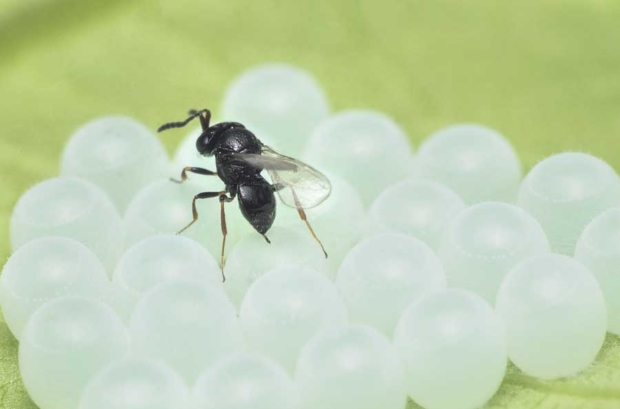As many of you may know at this point, Aaron Anderson and Jen Hayes are conducting some amazing research regarding Oregon native plants and their pollinator attractiveness. If you haven’t had the chance to read about their research yet, check out Aaron’s here and Jens here. While those two are producing data to determine the ecological benefits derived from some of our wildflowers, I chose to go down a more selfish route and see what our native plants can do for me. . .forget the bees. Below I have compiled a list of ethnobotanical uses for 6 of the 23 Willamette Valley wildflowers included in Aarons research – California Poppy, Camas, Pearly Everlasting, Oregon Iris, Western Red Columbine, and Goldenrod (my favorite).
Before you read any further, be aware that I am not an expert in wildcraft, ethnobotany, or herbalism. Never ingest the parts of any plant without being absolutely sure of its effects on the human body. Think of this more as a jumping-off point for your own research rather than any sort of guide or expert recommendation.
California Poppy – Escholzia californica:
The California Poppy – the ubiquitous orange herald of summer can do significantly more for you than just adding a pop of color to your yard or garden. E. californica can also be used as a medicine or candy! The flower itself is high in carotenoids and slightly sweet, the whole thing can be eaten raw as a candy-like treat. The ground roots and sap of the plant can be made into tinctures or infusions and be taken as a sedative, pain reliever, and muscle relaxer. California Poppy has been used by herbal practitioners as a “safe and gentle sedative for hyperactive children”. Maybe because they had too much poppy candy earlier in the day.
Camas – Camassia leichtlinii:
Camas is perhaps one of the best known plants on this list for its very popular edible bulb. The bulb is the most useful part of the plant and can be prepared in a few different ways. The two most popular are roasting and steaming. The roasted bulb gives off a flavor similar to a potato with a little hint of sweetness. Frying or mashing the bulb after the roasting are also common options to expand the flavor. Steaming camas bulbs is another popular practice which results in a food not unlike an onion. They are gelatinous and rich in complex carbohydrates, a fully browned camas bulb is just as delicious as any caramelized onion.
Pearly Everlasting – Anaphalis margaritacea:
Pearly Everlasting, a sweet little flower that has always reminded me a bit of a brilliant white star with a bright yellow center. These little flowers could also be a star of your ethnobotanical handbook considering how useful they are! The slender green leaves can be eaten as a normal green once they have been cooked a bit, perhaps by way of steaming or sautéing. A. margaritacea also offers a whole pallet of dyes all from one plant, depending on the concentration of each, it can provide shades of yellow, green, and brown. Pearly Everlasting can be employed as treatment for a whole range of ailments. The whole plant is filled with metabolites which can act as an anodyne, antiseptic, and sedative. Internally, it can also be used to treat diarrhea, dysentery, and some pulmonary affiliations. Externally, a poultice of the whole plant can be used to alleviate pain from burns, sores, ulcers, and bruises.
Oregon Iris – Iris tenax:
Oregon Iris is well known and celebrated for its floral beauty, but its grass-like leaves are often overlooked despite their usefulness. The long and immensely durable leaves can be used to make ropes or baskets. The 19th century botanist David Douglas once described Iris tenax’s leaves as “. . .in point of strength it will hold the strongest bullock and is not thicker than the little finger”. Like any craft, basket-weaving requires practice and learning, however the unique texture and color of the leaves are bound to make the product stand out among the rest.
Western Red Columbine – Aquilegia formosa:
The number of uses associated with Aquilegia formosa practically matches the number of bright red petals surrounding its cascading stamens. In terms of edibility, Western Red Columbine boasts edible leaves when boiled and a sweet nectary treat from the flowers themselves, but you have to share with the hummingbirds. Medicinally, treatments can be found from the roots, seeds, and leaves. The mashed roots can be used to relieve aching pains, for diarrhea, to counteract dizziness, and stomachaches. The chewed leaves can be used to alleviate sore throats and calm and upset stomach. Finally, a paste made from mashed seeds can be applied to the scalp to kill lice!
Goldenrod – Solidago canadensis:
Although sometimes considered cumbersome due to its amazing ability to spread, Goldenrod is one of the Pacific Northwest’s most diversely useful plants. It offers medicinal properties from its internal metabolites, edible roots and seeds, and of course Goldenrod’s signature pigmentation can be harnessed for dying. Infusions made from the flowers can offer relief from a variety of ailments, fever, flu, diarrhea, and sore throats are just some. Roots are commonly eaten smoked and seeds can be eaten roasted or raw. Finally, the flowers can bring a beautiful golden hue to any natural fiber that needs dying, just with a simple soak in warm water.
Further reading –
California Poppy:
https://plants.usda.gov/plantguide/pdf/pg_esca2.pdf
https://ethnobotany.csusm.edu/search_details.php?plant_id=9
Camas:
http://naeb.brit.org/uses/species/699/ http://arcadianabe.blogspot.com/2012/06/how-to-cook-camas.html
https://www.nrcs.usda.gov/Internet/FSE_PLANTMATERIALS/publications/orpmcpg13213.pdf
https://honest-food.net/cooking-blue-camas/
Pearly Everlasting:
https://practicalplants.org/wiki/Anaphalis_margaritacea
Oregon Iris:
http://naeb.brit.org/uses/18060/
Western Red Columbine:
http://naeb.brit.org/uses/species/303/
https://www.sutrostewards.org/single-post/2017/07/25/Columbine-A-Flower-of-Meanings
Goldenrod:








